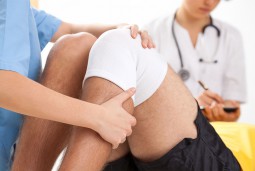When it comes to how kids interact today, there’s no question that being competitive is a big priority. This is particularly true among teenagers hoping for a spot on a college varsity team. A common question parents ask orthopedic surgeons treating their children is how they can know whether it’s really necessary to seek treatment after an injury occurs.
If you’re a parent whose child is active in sports, it’s almost always wise to be prudent. Here’s why.
Who Plays Pediatric Sports?
Almost 30 million youngsters take part in organized sports in the United States each year. Around 2.6 million of those up to age 19 receive yearly treatment in the emergency room. The culprits are injuries related to sports or recreational activities.
Younger kids primarily experience bruises and scrapes. When they enter their teens and the world of high school sports, it’s literally a different ball game. Sports like football, soccer, basketball, hockey, lacrosse, and wrestling feature a lot more contact.
You might be surprised to learn that teen athletes experience injuries at approximately the same rate that adult professionals do. One Chicago study even found that youngsters who are primarily active in an individual sports are roughly twice as likely to experience injuries as those with multiple sports interests.
Treatment of Pediatric Sports Injuries
Untreated sports injuries in youngsters can result in permanent damage or even disability. When a symptom persists or affects performance, it merits an exam by a physician.
The treatment of a pediatric sports injury depends on its severity. Resolution might require a combination of several types of treatments such as physical therapy, bracing, and strengthening exercises.
Among injuries serious enough for surgery, an orthopedic surgeon often uses an arthroscope to see the inside of a joint like an ankle or a knee. This instrument is also helpful when reconstructing ligaments or performing other repairs.
Common Injuries
There is one major difference between adult and pediatric sports injuries. It’s the fact that students in high school might be still growing. Their growth is typically uneven. This means that these young athletes are more susceptible than adults to injuries involving muscles, tendons, and growth plates.
Sports injuries among kids generally divide into these categories:
Acute injuries are the result of sudden trauma. They occur when players collide with each other or with obstacles like goal posts. The most common include:
- Bruises
- Sprains (complete or partial ligament tear)
- Strains (complete or partial tendon or muscle tear)
- Fractures
One of the most common causes of ankle fractures as well as sprains is a twisting action to the foot or the lower leg. Healthcare professionals associate acute injuries with single incidents of sudden twisting, collision, or falls.
Overuse injuries occur over time. They gradually develop as youngsters repeat the same athletic movement over and over. The affected parts of the child’s body don’t have sufficient time to recover between games or practices.
What’s affected? Muscles, tendons, bones, ligaments, and growth plates are all likely targets. Wrist and elbow injuries are very common among gymnasts and cheerleaders. Shoulder injuries are prevalent among swimmers.
Pediatric athletes are particularly prone to stress fractures. Because their bones are continually turning over—the medical term is remodeling—they face breakdown of older bone faster than they can manufacture new bone. The bones they most often fracture are those in the feet and the shinbone.
Concussion
The cause is a blow that forces the brain to quickly move back and forth within a youngster’s skull. The result is a mild type of traumatic brain injury. Although sports involving heavy contact usually get the blame for concussions, they can occur when taking part in any athletic activity.
Growth Plate Issues
Near the end of a youngster’s long bones, growth plates are areas where cartilage develops. They become solid bone in adulthood. Prior to that, they remain the last part of a bone to harden and are prone to fractures. Injuries can hinder proper bone growth and even cause deformity.
Despite the best efforts to prevent them, pediatric sports injuries occur. Seeking professional treatment quickly is essential. It’s also important that parents, coaches, and student athletes follow a physician’s guidelines as far as when it’s safe to return to athletic activity.



